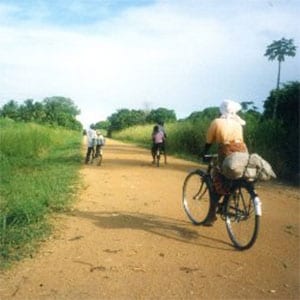We live in turbulent times. Economic crises, wars, the rise of populism and xenophobia, Brexit, climate change – these are just some examples of things that can seriously affect our finances, security, stability and health.
In face of these challenges, a new word – resilience – has recently entered the public vernacular. Everyone seems to be talking about resilience. Resilient economies, resilient cities, resilient livelihoods, resilient health… We are all to be made resilient. But what does the word actually mean? Originally, it was used by C. S Holling – a Canadian ecologist – in his work back in the early 1970s, where he used resilience to describe ecosystems’ ability to withstand change. Long story short, the concept eventually made its way from ecology to social sciences, and is now broadly used to describe countries, regions, communities, groups and individuals. In these turbulent times, it comes as no surprise that we would value the ability to weather disruptive events.
While the use of resilience as a concept is very broad, it has been particularly popular among those who study and promote various way in which people should respond to climate change impacts, such as droughts, floods, rising sea levels, hurricanes, and so on. In this context, ‘resilience to climate change’ has become the Holy Grail of organizations both in the Global North and the Global South. The ubiquity of resilience in talks around climate change and how it affects people in developing countries got me and some colleagues thinking: If resilience sounds so good in theory, does it translate into similarly positive outcomes in practice?
In two of my recently published articles, one of which I co-authored with Marcus Taylor from Queen’s University, I subject the understanding and application of resilience by large development organizations and financial institutions to critical scrutiny.
In the first one, titled Thwarting adaptation’s potential? A critique of resilience and climate-resilient development, I draw on the ethnographic data I collected during my doctoral fieldwork in Ethiopia and São Tomé and Príncipe – a small island nation in West Africa. In the article, I discuss how a government-led climate change adaptation project, of which the stated goal was to increase the ‘resilience of rural livelihoods’, fared in a small community of Liberdade in rural São Toméand Príncipe. I also examine how resilience is understood by the government and its partners, what kinds of solutions follow this understanding, and what effects they are likely to have in the village.
In the second article – Getting the Resilience Right: Climate Change and Development Policy in the ‘African Age’– political ecologist Marcus Taylor and I look at the The Africa Climate Business Plan– the World Bank’s strategic plan for developing Africa in times of climate change. Like in the case of the adaptation project in São Tomé and Príncipe, this plan also is guided by the notion of resilience. African resilience is to be ‘strengthened’, ‘powered’ and ‘enhanced’ by the Bank’s portfolio of activities. In the article, Marcus and I ask what all this actually means for Africa and Africans, and whether it differs from the past decades of business-as-usual development work on the continent.
I won’t give away here what we have found (the articles do a much better job at that!), but suffice it to say that resilience is not all roses. Even using the word ‘resilience’ to describe a problem or plan a project carries with it certain implications that may paradoxically render people more vulnerable to climate change than before.
At the Centre for Climate Justice, we are very cautious about buying into big buzzwords that promise a solution to the climate conundrum we are facing. No approach, policy or project aiming to prepare humanity for climate change will do so equally, and there will always be winners and losers stemming out of those efforts. Our job here at the Centre is to make sure that these inequalities are always made visible, helping decision-makers across the planet make more equitable choices when it comes to climate change adaptation.
Resilience, while a promising concept in theory, may simply not be the way to go.
Michael Mikulewicz

Be First to Comment